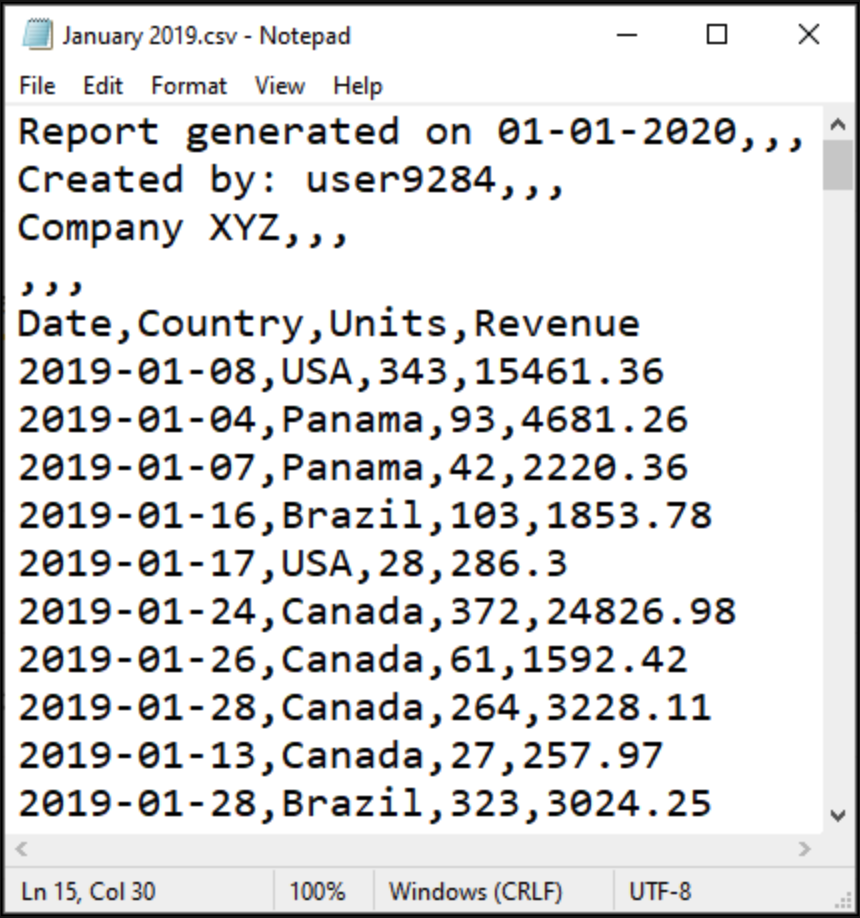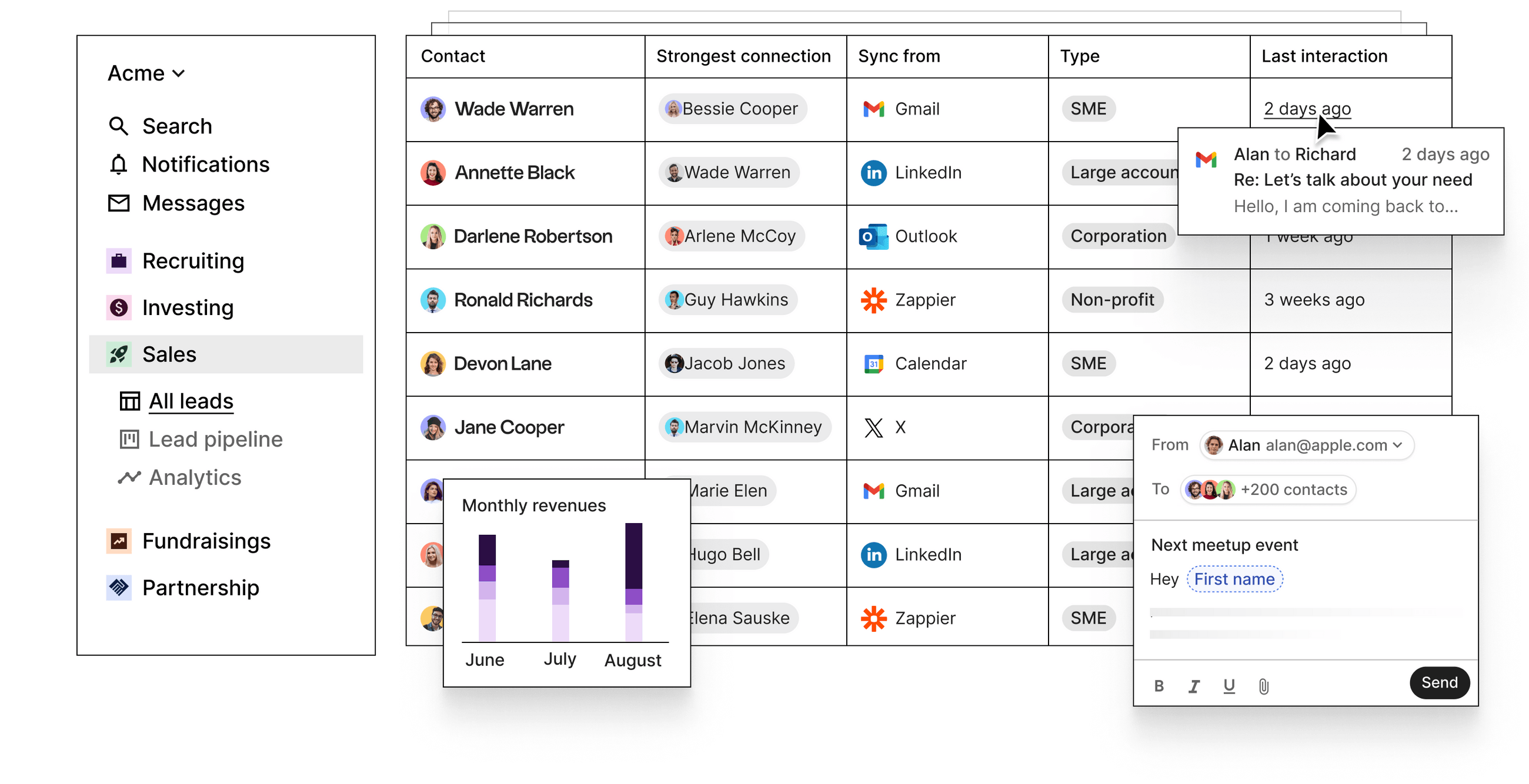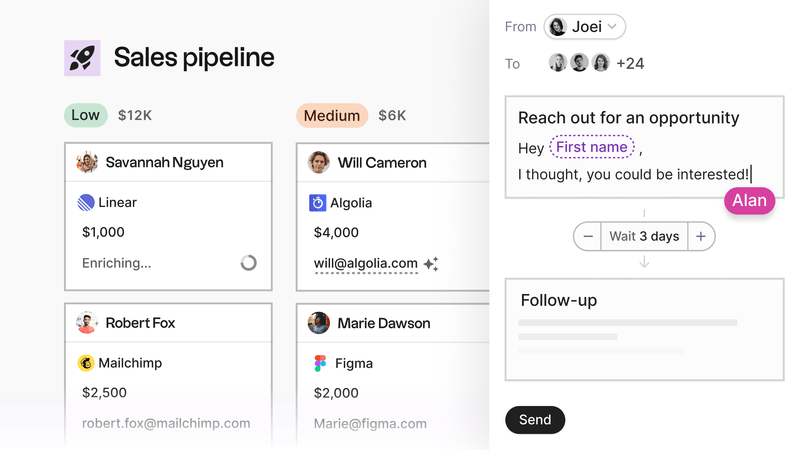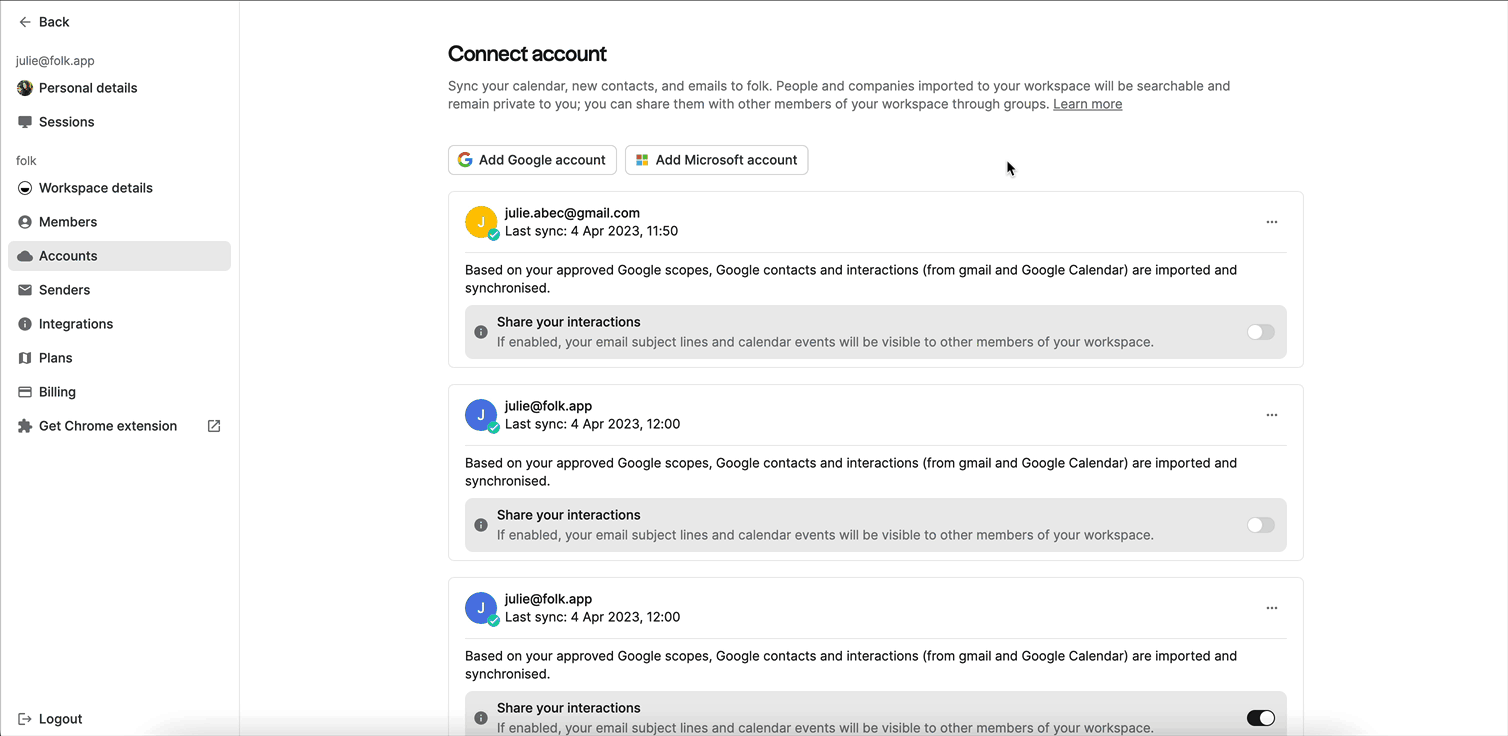Discover folk - the CRM for people-powered businesses
When was the last time you updated your Outlook contacts? Chances are you might have left them for a while and there are a fair few things that need updating including an email address here and there or your whole address book. The good news is instead of allowing them to gather dust, you can export them. A customer relationship management platform would be a good start, because you'll then be able to automate this process and keep any new contact information up to date without wasting your time searching for a profile card.
Benefits of exporting contacts from Outlook into a CRM
Even though it can be time consuming to make sure you have the right file type, it's worth it. Especially if you're going to import contacts into a customer relationship management platform. Below are a few reasons why:
- Create shareable contacts list: A CRM can help you create a global address list that houses all your new contacts and existing contacts in one place.
- Automate the process of keeping contacts up to date: A CRM can help you enrich your data and make sure your email addresses are up to date.
- Share contacts with your team: You can use a CRM to create new contact lists that your team can use for their pipeline, without compromising the privacy of your inbox.

How to export Outlook contacts

There are a few file formats you need to be aware of if you're exporting contacts. These are:
- .CSV file
- .pst file
For this step by step guide, we'll be using a .CSV file
Once you have Outlook open, all it takes are a few simple steps, which we've outlined below.
1. Select File
You can find this on the top left of your Outlook screen. Once you click that, this will bring up an account information page.
2. Select open and export
From the account information page, go to the info tab on the left. Then you'll see the open and export button which you need to click.
3. Select import/export
From the open page that's popped up, select the import/export button.
4. Choose your ideal file type
At this stage there are two file formats for you to choose from:
- .CSV file: A comma-separated value file is a plain text file that stores data in a simple format. Each line in that file represents a data record and separates individuals with commas.
- .PST file: A personal storage table file is used by Outlook to store copies of any messages, calendar events and other items.
We suggest using a CSV file as it is universally used, and you'll be able to use it to import your contacts into most platforms.

5. Choose the folder that contains the contacts you want to export
On the next page, you can choose a specific folder that has all the contacts you want to export. If you have multiple different folder you can choose the main contacts folder which appears top of the list.
5. Choose the location where you want to save it to
This will prompt you to create a file where you will be storing your contact information. You can choose an existing file, or create a new one with a relevant name for it. Once you're done, click next.
6. Verify everything
Before you click the next button, double check everything looks correct. If you've accidentally chosen the wrong folder, simply change it by clicking 'Browse' and finding the right one. Once you're done, click 'Next'.
7. Select Finish
Congratulations, you're at the final step. It'll summarise what you've done and say 'The following actions will be performed'. Select finish and you're done.
Next steps after exporting your Outlook contacts
Once you've got your CSV file, give it a quick check. Review your data and make sure everything is in the right column. You can easily open the CSV file in Excel where you can review it and make any necessary edits on the spot.
Automatically export Outlook contacts using folk
Fancy avoiding doing all the above? With folk, you can. folk can automate the process of exporting your Microsoft Outlook contacts. If you happen to use Google along side your Outlook account, folk's CRM can support and sync across both. Giving you full access to a global address list at your fingertips.

Key features:
- Multiple business function support: From sales to marketing, fundraising and recruitment folk is highly customizable and can support the needs of different business goals. Creating one source of truth.
- Contact sync and management: folk supports multiple email providers, so it can bring all the contacts from your multiple email account into one place. Keep them organized and map custom fields.
- Create shareable contact list: Easily create contact lists to share with your team, and organize them into multiple pipelines.
- Mail merge: Use folk's AI feature, 'Magic Field' to send personalized email campaigns to multiple recipients. There's also an email sequences feature so you can craft a follow up email message without switching context. What's more, you can also keep an eye on what's performing well with their handy analytics feature.

How to import contacts from Outlook into folk
All it takes is three easy to follow steps to connect your Microsoft accounts with your folk workspace:
- Go to your workspace settings in the Accounts section
- Click on Add a Microsoft account: You can connect all the Microsoft accounts you want to synchronize with folk.
- Give permissions: Make sure to give the right permissions to enable folk to import your contacts and interactions.

Frequently Asked Questions:
1. What information will be synchronized?
- Contacts: We import all your contacts from the Outlook addresses you've connected to folk – meaning all the people you had at least one interaction with will be added to your account. This way, you can easily build your contact database, getting all the info you need straight from your emails.
- Interactions: folk imports most of the interactions you had with these contacts such as emails-related information (email subject, date, sender, and receiver) and calendar events (event name, date, and participants). folk automatically pins the information extracted from Outlook to the right contact profile.
2. When does folk synchronize the contacts?
- Contacts are synced in real-time. New contacts will automatically be imported into folk. They'll be available in the 'Search'.
- Interactions (emails & calendar events) are also synced in real-time and automatically. Every new interaction will appear on your contacts' profiles.
3. What data is imported exactly from Microsoft?
- Contacts: both your People (outlook personal contacts) & 'Implicit contacts' (New contacts are saved in your default Contacts folder) are imported with the following data:
- Name, email, job title, avatar, phone number, address, company
- Interactions: emails and calendar events
4. What happens if my Microsoft account is managed by an administrator?
If your account is managed by an administrator, then when connecting your account, Microsoft will request an approval from your admin.
Your admin will need to approve the integration, so that you can sync your Outlook account to folk.
Conclusion
Exporting contacts doesn't have to be a minefield. You shouldn't have to open Outlook every time you want to get someone's contact information. With folk, you can easily export a comma separated values file and create a global address list without having to export contacts. All you have to do is sync them with our CRM so you can easily create a new contact list for your team which can be their default contacts folder and avoid any classic Outlook errors. folk can also support multiple email account. Try folk today, free.
Discover folk CRM
Like the sales assistant your team never had


